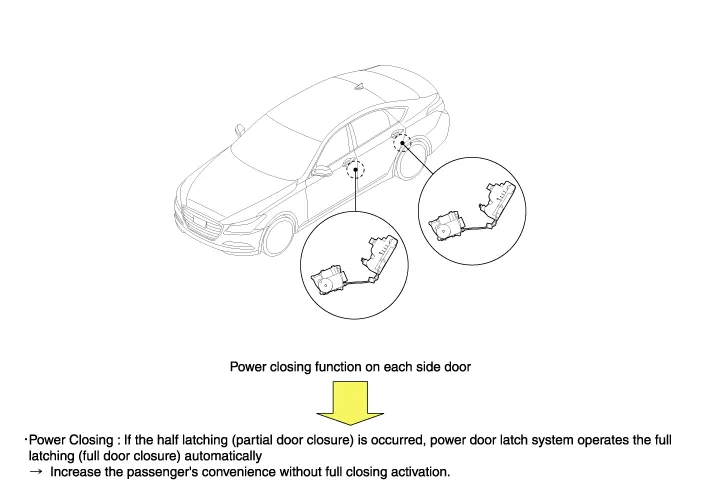Hyundai Genesis (DH): Power Door Locks / Description and Operation
| Description |
| - |
Featured on all four doors. |
| - |
Consists of a door lock actuator and a soft closing actuator. |
| - |
Locks/unlocks doors using DDM and ADM signals. |

Component Location 1. DDM (Driver Door Module)2. ADM (Assist Door Module)3. IGPM (Integrated Gateway Power Control Module)4. Door lock knob5. Trunk lid actuator6.
Components 1. Power Actuator2. Cinching Cable3. Door Latch
Other information:
Hyundai Genesis (DH) 2013-2016 Service Manual: Description and Operation
Description Integrated Rain Sensor Integrated rain sensor (A) controls three systems: front wiper, auto-light, and central air conditioner. 1. Wiper Control System When "AUTO" switch signal is received from the multi-function switch on the right, the integrated rain sensor detects the amount of rainfall.
Hyundai Genesis (DH) 2013-2016 Service Manual: Blind Spot Detection Indicator Repair procedures
Removal Blind Spot Detection Warning Indicator 1. Disconnect the negative (-) battery terminal. 2. Remove the mirror (A). Installation Blind Spot Detection Warning Indicator 1. Install the outside mirror. 2. Connect the negative (-) battery terminal.
Categories
- Manuals Home
- Hyundai Genesis Owners Manual
- Hyundai Genesis Service Manual
- Engine Control / Fuel System
- Description and Operation
- 4 Wheel Drive (AWD) System
- New on site
- Most important about car
